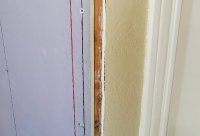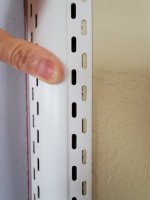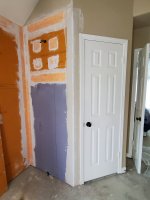Martina
Member
Hello! During our bathroom demo, we cut back one of the walls a tad too far (1/4 - 1/2 inch), leaving us little room to affix the 45 degree outside corner bead to the right wall (see images). Is there a way to fix this issue other than having to cut back the drywall to the door frame and replacing it? Also, I found conflicting information on the web with regards to the installation procedures of vinyl bead. Some use nails, some staples, others glue it down and then I also saw someone embedding everything in mud. Very confusing. What is the proper way to install this type of bead? Thanks in advance for any forthcoming responses.



